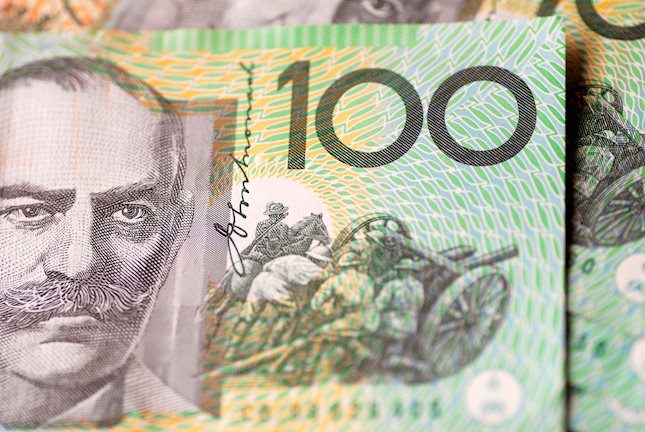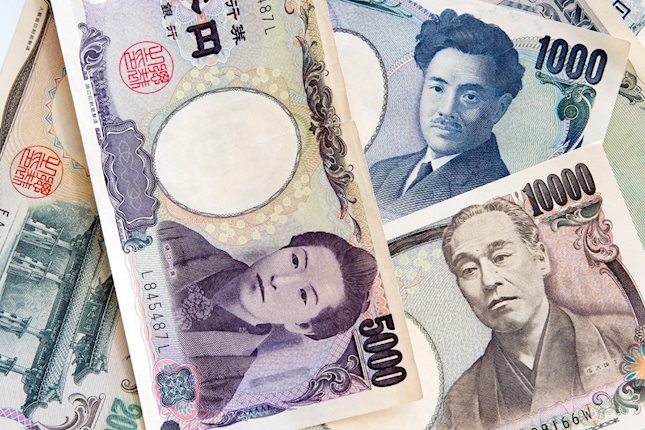- The Mexican Peso (MXN) starts the week with a more than 0.40% decline against the U.S. Dollar (USD), with the USD/MXN pair rising above the 17.50 level.
- Mexico's Consumer Confidence Index fell in October, marking the first significant drop since July 2022, signaling growing consumer pessimism about the economic outlook.
- Market participants are looking ahead to the Bank of Mexico's (Banxico) upcoming policy meeting, where rates are expected to remain at 11.25%.
Mexican Peso (MXN) begins the week on the wrong foot against the US Dollar (USD) and loses at around 0.30%, even though market sentiment remains upbeat. A rebound in US Treasury bond yields underpins the Greenback. Meanwhile, traders brace for the Bank of Mexico (Banxico) monetary policy meeting on Thursday, in which the central bank is expected to keep rates unchanged. At the time of writing, the USD/MXN advances solidly, trading above the 17.50 figure amid a positive market sentiment.
Mexico’s economic docket featured Consumer Confidence in October, which slipped 0.8 points, from 46.8 to 46, revealed the National Statistics Agency (INEGI). This is the first drop since April 2022, which witnessed a contraction of 0.3, and the most significant since July 2022, when confidence dropped 1.6 points. Although the economy is expected to grow more than 3%, consumers are more pessimistic about the future.
Across the border, the US Federal Reserve’s (Fed) decision to hold rates unchanged was justified by weak PMI readings and a softer US Nonfarm Payrolls report. Nevertheless, the drop in US Treasury bond yields loosened monetary conditions after Fed officials revealed that high yields at the long end of the curve tightened monetary conditions, refraining the US central bank from raising rates further.
Recently, Fed Governor Lisa Cook said the Fed is “determined to reach the 2% inflation objective,” adding that she hopes that current policy settings are restrictive enough to achieve that task. USD/MXN traders would also be attentive to Fed Chairman Jerome Powell's speech on Wednesday.
Daily digest movers: Mexican Peso losses a step as US bond yields underpin the USD/MXN
- The US Nonfarm Payrolls report reported the economy added 150,000 jobs in October, below estimates of 180,000 and last month’s downwardly revised 297,000.
- The ISM Manufacturing PMI dropped to contractionary territory at 46.7 in October, below forecasts and September’s 49.0 reading.
- Mexico S&P Global October Manufacturing PMI at 52.1, above September’s 49.8.
- Mexico’s Gross Domestic Product grew by 0.9% QoQ in the third quarter on its preliminary reading, above the previous quarter and estimates of 0.8%.
- On a yearly basis, Mexico’s GDP for Q3 expanded by 3.3%, above forecasts of 3.2% but trailing the previous 3.6%.
- On October 24, Mexico's National Statistics Agency, INEGI, reported annual headline inflation hit 4.27%, down from 4.45% at the end of September and below forecasts of 4.38%.
- Mexico’s core inflation rate YoY was 5.54%, beneath forecasts of 5.60%.
- The Bank of Mexico (Banxico) held rates at 11.25% in September and revised its inflation projections from 3.50% to 3.87% for 2024, which remains above the central bank’s 3.00% target (plus or minus 1%). The next decision will be announced on November 9.
Technical Analysis: Mexican Peso buyers in charge, but sellers eye a recovery past the 50-day SMA
The USD/MXN daily chart portrays the pair as bearish despite having undergone a slight recovery after diving to a new month low of 17.28 on Friday. The pair also formed a Japanese hammer candlestick pattern at Friday’s lows, although it ended the day painted red, weakening the short-term reversal signal.
If the hammer signals a turnaround, and US Dollar bulls manage to lift the pair past the 50-day Simple Moving Average (SMA) at 17.64, that could open the door to reclaiming the 200-day SMA at 17.69. On the other hand, if bears step in again and drag the exchange rate below the 100-day SMA at 17.11, a test of the 17.00 figure is on the cards.
Central banks FAQs
What does a central bank do?
Central Banks have a key mandate which is making sure that there is price stability in a country or region. Economies are constantly facing inflation or deflation when prices for certain goods and services are fluctuating. Constant rising prices for the same goods means inflation, constant lowered prices for the same goods means deflation. It is the task of the central bank to keep the demand in line by tweaking its policy rate. For the biggest central banks like the US Federal Reserve (Fed), the European Central Bank (ECB) or the Bank of England (BoE), the mandate is to keep inflation close to 2%.
What does a central bank do when inflation undershoots or overshoots its projected target?
A central bank has one important tool at its disposal to get inflation higher or lower, and that is by tweaking its benchmark policy rate, commonly known as interest rate. On pre-communicated moments, the central bank will issue a statement with its policy rate and provide additional reasoning on why it is either remaining or changing (cutting or hiking) it. Local banks will adjust their savings and lending rates accordingly, which in turn will make it either harder or easier for people to earn on their savings or for companies to take out loans and make investments in their businesses. When the central bank hikes interest rates substantially, this is called monetary tightening. When it is cutting its benchmark rate, it is called monetary easing.
Who decides on monetary policy and interest rates?
A central bank is often politically independent. Members of the central bank policy board are passing through a series of panels and hearings before being appointed to a policy board seat. Each member in that board often has a certain conviction on how the central bank should control inflation and the subsequent monetary policy. Members that want a very loose monetary policy, with low rates and cheap lending, to boost the economy substantially while being content to see inflation slightly above 2%, are called ‘doves’. Members that rather want to see higher rates to reward savings and want to keep a lit on inflation at all time are called ‘hawks’ and will not rest until inflation is at or just below 2%.
Is there a president or head of a central bank?
Normally, there is a chairman or president who leads each meeting, needs to create a consensus between the hawks or doves and has his or her final say when it would come down to a vote split to avoid a 50-50 tie on whether the current policy should be adjusted. The chairman will deliver speeches which often can be followed live, where the current monetary stance and outlook is being communicated. A central bank will try to push forward its monetary policy without triggering violent swings in rates, equities, or its currency. All members of the central bank will channel their stance toward the markets in advance of a policy meeting event. A few days before a policy meeting takes place until the new policy has been communicated, members are forbidden to talk publicly. This is called the blackout period.
Information on these pages contains forward-looking statements that involve risks and uncertainties. Markets and instruments profiled on this page are for informational purposes only and should not in any way come across as a recommendation to buy or sell in these assets. You should do your own thorough research before making any investment decisions. FXStreet does not in any way guarantee that this information is free from mistakes, errors, or material misstatements. It also does not guarantee that this information is of a timely nature. Investing in Open Markets involves a great deal of risk, including the loss of all or a portion of your investment, as well as emotional distress. All risks, losses and costs associated with investing, including total loss of principal, are your responsibility. The views and opinions expressed in this article are those of the authors and do not necessarily reflect the official policy or position of FXStreet nor its advertisers. The author will not be held responsible for information that is found at the end of links posted on this page.
If not otherwise explicitly mentioned in the body of the article, at the time of writing, the author has no position in any stock mentioned in this article and no business relationship with any company mentioned. The author has not received compensation for writing this article, other than from FXStreet.
FXStreet and the author do not provide personalized recommendations. The author makes no representations as to the accuracy, completeness, or suitability of this information. FXStreet and the author will not be liable for any errors, omissions or any losses, injuries or damages arising from this information and its display or use. Errors and omissions excepted.
The author and FXStreet are not registered investment advisors and nothing in this article is intended to be investment advice.
Recommended content
Editors’ Picks

AUD/USD keeps the red near 0.6200 after Chinese inflation data
AUD/USD keeps losses near the 0.6200 mark following mixed Australian data and as expected China's inflation numbers. The RBA's dovish shift and China's economic woes add to the weight on the Aussie as risk sentiment remains tepid. Fedspeak eyed.

USD/JPY: Bears attack 158.00 on strong Japanese wage growth data
USD/JPY drifts lower to test 158.00 early Thursday after data showed that base salaries for Japanese workers increased at the fastest pace in 32 years. The data backs the case for the BoJ to raise interest rates, which, along with the cautious market mood, benefits the safe-haven Yen and drags the pair away from a multi-month top.

Gold price retreats toward $2,650 despite risk aversion
Gold price is retreating from near a monthly high of $2,670 in Thursday's Asian trading. Resurgent haven demand for the US Dollar amid risk aversion weigh on Gold price even as US Treausry bond yields extend pullback. Focus shifts to Fedspeak amid holiday-thinned trading.

Has Bitcoin topped for the cycle? Here's what key metrics suggest
Bitcoin experienced a 2% decline on Wednesday as the cryptocurrency market grapples with recent losses. On-chain data has indicated a shift in the accumulation of the leading cryptocurrency, suggesting that holders are increasingly selling their assets.

Bitcoin edges below $96,000, wiping over leveraged traders
Bitcoin's price continues to edge lower, trading below the $96,000 level on Wednesday after declining more than 5% the previous day. The recent price decline has triggered a wave of liquidations across the crypto market, resulting in $694.11 million in total liquidations in the last 24 hours.

Best Forex Brokers with Low Spreads
VERIFIED Low spreads are crucial for reducing trading costs. Explore top Forex brokers offering competitive spreads and high leverage. Compare options for EUR/USD, GBP/USD, USD/JPY, and Gold.